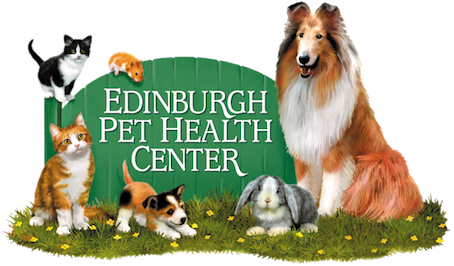Taking the anxiety out of anesthesia
Pets require anesthesia for a variety of procedures during their life. Many of these procedures such as spaying, neutering and dental cleanings are done to avoid potentially serious problems later in life.
Anesthesia involves administering potent medications to induce an unconscious state. When the procedure is done, ideally the pet wakes up without feeling excessive amounts of post-operative pain. As most people are aware, anesthesia is not without risk of complications. Many people have acquaintances whose pets “never woke up” after an anesthetic episode. Understandably this contributes to client anxiety, hesitation, and occasionally outright refusal to allow anesthesia despite the real need for the procedure. Death due to anesthesia is actually very rare. Risk of fatality is related to underlying disease problems, individual patient sensitivity to anesthetic drugs, human error and fate.
Edinburgh Pet Health Center takes several measures to reduce the risk of death and other serious complications from anesthesia. The knowledge of these factors will allow pet owners to make a rational, informed decision regarding anesthesia for their pet.
Anesthesia Elements
1. Physical exam (required)
Reason: To detect physical abnormalities such as heart and lung disorders, organ enlargement, dehydration and other potentially serious problems.
2. Pre-anesthetic labwork (recommended for all patients, required for patients 10 years of age or older)
Reason: To evaluate the function of major organs such as the kidneys and liver, and to assess for the presence of anemia, dehydration, infection and bleeding abnormalities that could complicate anesthesia and/or surgery. The degree of testing needed depends on patient’s age, condition and history.
3. Inhalant (gas) anesthesia
Reason: Gas anesthesia is considered to have a wider margin of safety due to the ability to regulate depth of anesthesia. Pets recover more quickly with this form of anesthesia.
4. Certified veterinary technicians
Reason: To provide skilled nursing care for monitoring your pet’s anesthesia and recovery.
5. Electronic monitoring (provided for all animals undergoing general anesthesia)
Reason: For early detection of heart arrhythmias blood pressure changes and oxygenation problems that arise during anesthesia so immediate corrective action can be taken. We currently use an EKG heart monitor, a doppler blood pressure unit and a pulse oximeter.
6. Circulating warm water heating blanket and Baer Hugger forced air warming blanket
Reason: To maintain as close to normal body temperature as possible during anesthesia because low body temperature increases the chance of adverse anesthetic reactions.
7. Intravenous catheter and fluids-used for most anesthesia episodes.
Reason: Ensures quick access to the bloodstream for emergency drug administration and allows for better maintenance of blood pressure and hydration.
8. Analgesia (pain relief)
Reason: Animals that are given pain medication in addition to the anesthetic drugs experience a more comfortable recovery and are able to rest and relax.
We acknowledge that we cannot guarantee your pet will not suffer anesthetic complications, but with careful attention to the eight elements discussed above, we can keep the risk of complications as low as possible.

